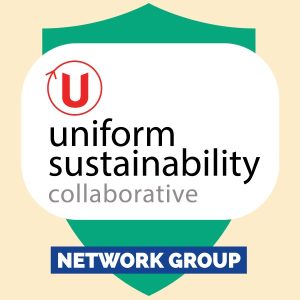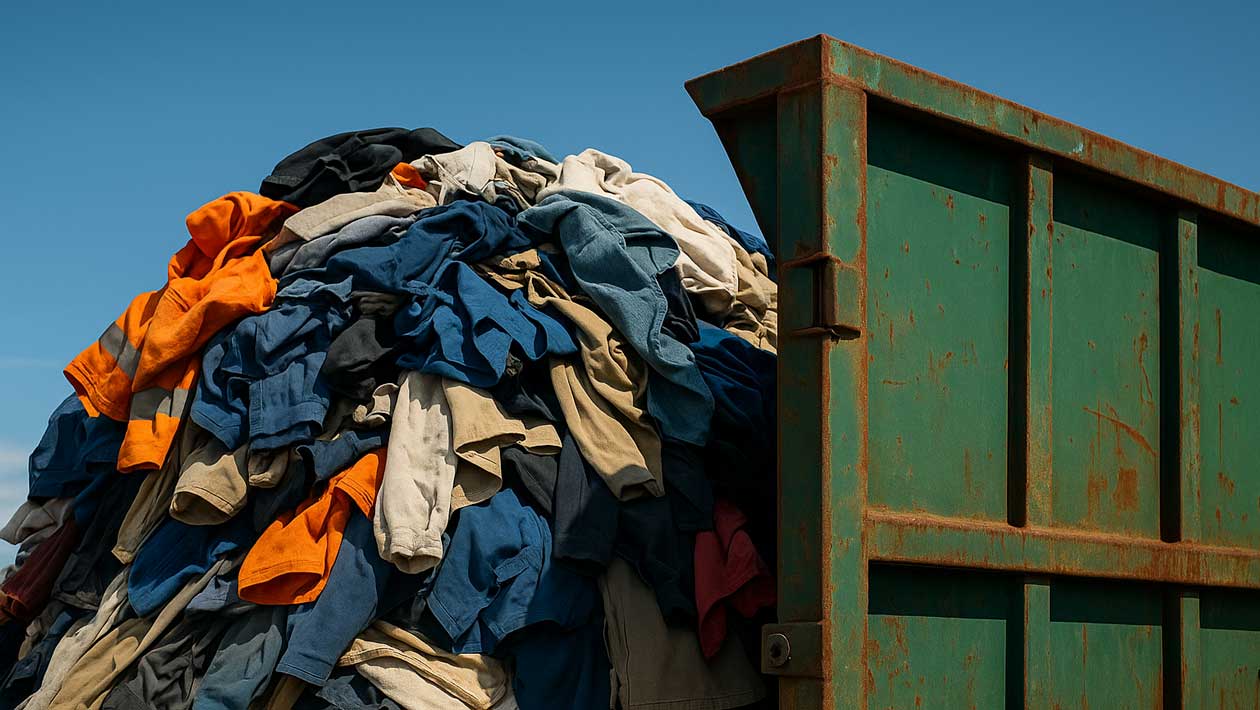The uniform and workwear industry is built on durability, consistency, and performance. We design and deliver garments meant to last, to be worn day in and day out, and to stand up to tough environments. But what happens when those garments have done their duty? Most of the time, they take the same one-way trip as the rest of the world’s cast-off apparel—straight into landfills or incinerators.
A new Boston Consulting Group report, Spinning Textile Waste into Value, makes it clear that this is not only an environmental challenge but a massive missed opportunity. The global textile waste crisis has reached staggering proportions, but there’s a path forward—and the uniform and workwear sector is uniquely positioned to help lead the way. From tighter control over fabric specs to strong, ongoing client relationships, our industry has the tools to turn waste into raw material, reduce emissions, and create measurable business value. This isn’t just about being “greener.” It’s about securing supply chains, meeting regulatory pressures head-on, and offering clients something they increasingly want: uniforms with a sustainability story worth telling.
The Scale of the Problem—and the Potential
In 2024, global textile waste hit 120 million metric tons—enough to fill more than 200 Olympic stadiums. If nothing changes, that figure could exceed 150 million metric tons annually by 2030. Of that mountain, about 80% was landfilled or incinerated, 12% reused, 7% deemed recyclable, and less than 1% recycled into new fibers.
That waste isn’t just a moral and environmental failure—it’s an economic one. The raw material value of unrecovered textiles is estimated at $150 billion per year. Even reclaiming a quarter of that could offset the annual materials spending of the world’s 30 largest fashion companies. For uniform suppliers, that’s the kind of economic shift that could buffer against rising costs and raw-material shortages.
The climate impact is equally sobering. Textile production accounts for 92% of the fashion industry’s greenhouse gas emissions, and disposal is just as damaging. Incinerating a single metric ton of textiles releases emissions equivalent to six round-trip flights between London and New York; landfilling produces the equivalent of eight. Open dumping also leaks microplastics into the environment. For industries we serve—public safety, healthcare, hospitality—these statistics matter. Many clients are under mounting pressure to reduce their scope 3 emissions. If we can help them keep uniforms out of the waste stream, we become part of their solution.
The report points to a prize worth chasing: with coordinated action, recycling rates could surpass 30%, reclaiming more than $50 billion in raw material value and creating 180,000 new jobs. The demand for recycled textiles is already projected to outpace supply by 30–40 million metric tons by 2030. This is a market waiting for leadership.
Why Our Industry Has an Edge
Unlike fast fashion, the uniform and workwear sector is built around standardization, repeat orders, and closely controlled material specs. That means our products are easier to collect, sort, and recycle than the sprawling variety in consumer fashion. We also have something most apparel makers lack: long-term relationships with clients. When you control the entire uniform lifecycle—from initial design to reorders to end-of-life replacement—you have the perfect infrastructure to introduce closed-loop programs.
Imagine a pitch where you don’t just deliver new uniforms—you also arrange to collect the old ones, send them into a certified recycling stream, and return garments made from those reclaimed fibers. That’s more than a sales advantage; it’s a tangible value proposition that can differentiate you in competitive bids.
But we shouldn’t ignore the hurdles. Recycled fibers like polyester and cotton often cost more than virgin materials—sometimes double—because virgin supply chains are optimized while recycling systems lag behind. Manual sorting is still the norm, slowing the process and raising costs. And the blended fabrics that dominate modern uniforms, such as polyester-cotton-elastane, require more advanced recycling technologies than most systems can currently handle.
Still, our sector is well placed to work with partners who are tackling these barriers. We can help feed recyclers consistent, high-quality post-consumer textiles. We can invest in or support pilot programs that test chemical recycling, fiber separation, and bio-based processes. And we can aggregate demand for recycled fibers, making them more competitive over time.
Turning Challenges into Strategy
BCG’s report outlines five key actions for building a circular textile economy, and all of them translate directly into opportunities for uniform suppliers and distributors. The first is to promote demand for recycled fibers—not as a niche option but as a mainstream offering. That means showing clients that recycled fabrics meet the same performance specs, from colorfastness to tensile strength, as virgin materials.
The second is to collect more waste. In our world, that could be as simple as adding take-back clauses into supply contracts, setting up collection bins at client sites, or offering credit toward new orders for returned uniforms. The third is modernizing sorting—working with recycling partners that use near-infrared spectroscopy, AI, and robotics to identify fiber types and colors at scale, ensuring better feedstock for recycling.
Scaling recycling technologies is the fourth move, and our industry can accelerate this by supplying steady volumes of uniform textiles, making recycling operations more economically viable. The fifth is to invest in innovation. The $250 million currently invested in next-gen recycling firms is nowhere near enough to meet global needs. Whether through direct funding, joint ventures, or strategic partnerships, our sector can help bring these technologies to market faster.
Regulation will only make these efforts more urgent. The EU’s Extended Producer Responsibility laws will make producers financially responsible for end-of-life garment management, and mandates like the Netherlands’ 5% recycled textile content target by 2027 are just the beginning. Add in climate-related supply disruptions—Pakistan’s cotton production hit a 30-year low in 2023–2024—and it’s clear that recycled fibers aren’t just a “nice to have,” they’re a hedge against volatility.
A Call to Lead
The textile waste crisis isn’t someone else’s problem. The uniform and workwear industry has the relationships, the product control, and the logistical capabilities to be a catalyst for change. By building take-back programs, investing in sorting and recycling innovations, and telling our clients’ sustainability stories alongside our own, we can transform waste into competitive advantage.
BCG’s report is a wake-up call, but it’s also an open invitation. The mountain of textile waste is growing—but so is the opportunity to turn it into something of real value. If we act now, we won’t just be part of the circular economy—we’ll help shape it.
To read the full report, visit https://www.bcg.com/publications/2025/spinning-textile-waste-into-value.




















